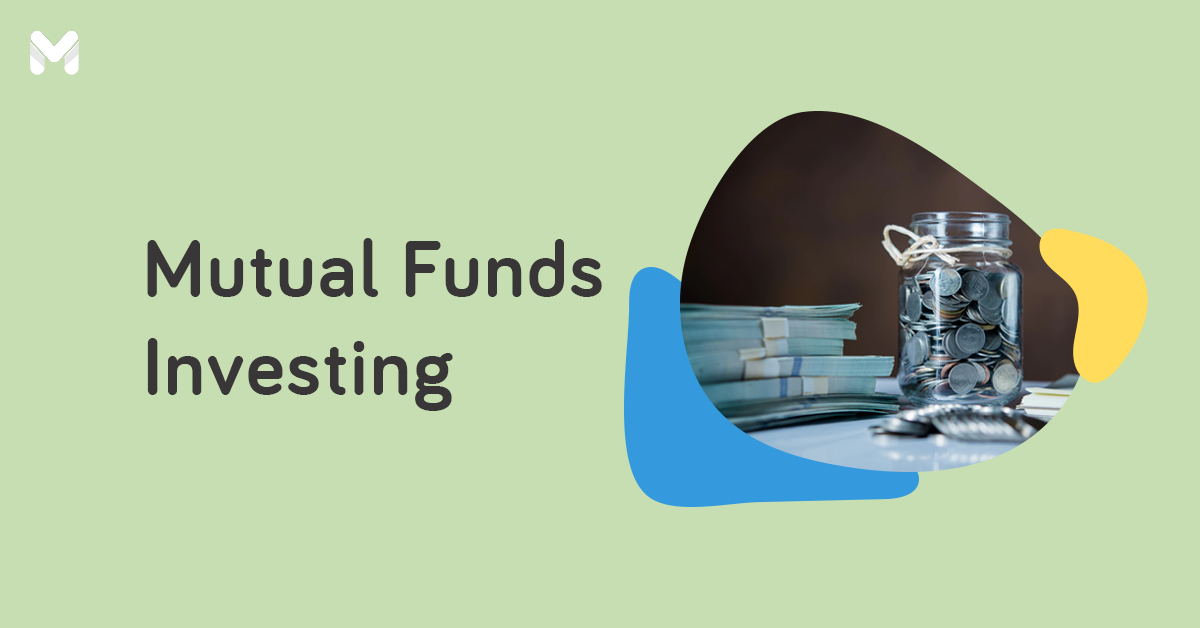Millennials are now considered the country’s next super investors considering their growing interest in the real property market.[1] But investing in real property demands a larger capital.
If you’re looking to make such investments, try earning passive income even with a small amount through a unit investment trust fund or UITF in the Philippines. Although UITFs pose risks like any other type of investment, they also offer many benefits to your growing fund.
So, what is a UITF investment? If you want to know more about it, read how it can jump-start your investment journey below.
What is a UITF Investment?

Not sure what the UITF meaning is? UITF stands for Unit Investment Trust Fund, a pool of investments funded by various investors. Each UITF in the Philippines is different, with plan rules or a Declaration of Trust that defines all the mechanics of investing, managing, and operating the pool of funds.
👉 How Does a UITF Work?
You can think of UITF as a basket with different fruits—one basket may contain mangoes, the other may contain pineapples, and another may include a combination of two fruits. In the case of a trust fund, various holdings make up the investment basket.
As with a fruit basket wherein you can decide which fruits to buy, professional fund managers handle and manage the holdings of UITFs. Since these professionals actively manage the fund, once you set it up, you can sit back, relax, and make your money work for you.
👉 What are the Different Features of a UITF?
Not all UITFs in the Philippines are the same. Each UITF product differs depending on the following features:
- Investment objective
- Portfolio mix
- Types of assets invested in
- Settlement period
- Charges
- Benefits and risks
- Minimum holding period
By investing in a UITF, you can grow your money grow through diversified products and markets. And since investment objectives differ from one UITF product to another, the benefits, charges, risks, and other rules governing your investment may affect your investment journey.
UITF vs. Mutual Fund: What is the Difference?
The most significant difference between UITFs and mutual funds is how the fund is managed. Banks commonly manage UITFs, and the Bangko Sentral ng Pilipinas supervises these banks.
Insurance and investment companies, on the other hand, handle mutual funds. The Securities and Exchange Commission regulates these companies.
Different Types of UITFs in the Philippines
There are four kinds of UITFs in the Philippines. Familiarize yourself with them below.
📌 Money Market Funds
Money market UITFs have special deposit accounts and time deposits that mature at a specific date (usually a year or less). The yield from money market UITFs is higher than what you’ll get from the interest in your savings account.
This type of unit investment trust fund is suitable for conservative investors who don’t want to expose themselves to risk. Even though UITFs, including money market funds, are not insured by the Philippine Deposit Insurance Corporation (PDIC), money market trust funds in the Philippines are considered safer than other UITFs.
📌 Bonds
Bond UITFs have both government (fixed-rate treasury notes) and retail treasury bonds, as well as corporate bonds with longer maturity dates than money market funds. Bonds are considered IOUs (I owe you) since they’re debts wherein you, the lender, lend money to a borrower. The borrower can be the government or a corporation. These borrowers take on debt as bonds to fund projects that drive an entity’s growth.
Bonds suit moderately conservative investors who want to take on minimal risk and experience higher returns.
📌 Balanced Funds
Balanced funds contain conservative securities (fixed-rate treasury notes and bonds) and riskier ones like stocks. This type of unit investment trust is suitable for moderately aggressive investors willing to take on more risk by investing in stocks but simultaneously minimizing risk by including more conservative securities such as bonds.
📌 Stocks or Equities
Equity UITFs are 100% stocks. Unlike investing in the stock market, where you individually buy stocks and create your stock portfolio, equity UITFs already have a pool of stocks, including some of the country’s largest corporations like Ayala Land, SM Prime Holdings, and PLDT, among others.
This type of unit investment trust fund is suitable for aggressive investors who are willing to take risks to experience much larger yields, but are too busy to invest in individual stocks.
How Do I Earn from UITF?

Your unit investment trust fund can be invested in stocks and bonds to make a profit. Your fund manager will do most of the leg work for you and other investors. The fund earns through stock price increase, interest, and dividend.
Read below what these terms mean:
- Stock price increase - Your UITF will earn money when the prices of the company shares you invested in have increased. This can happen if many investors are attracted to the company’s prospects, such as business projects and expansions.
- Dividend - This is a sum of money a company gives its shareholders out of its profits. The company can release some of its annual profits to shareholders like yourself or invest it back into the business.
- Bonds - If your UITF in the Philippines is invested in bonds, you’ll profit when the borrower pays the interest. Private companies and the government issue bonds as proof of indebtedness.
Pros and Cons of Investing in UITF
Before investing in UITF, you must know its advantages and disadvantages. This can help you make an informed decision regarding where you allot your money.
👍 Pros of UITFs
- Easy way to earn passive income
- Investment capital as low as ₱5,000
- Diverse investment in various industries and companies
- A professional fund manager will do the legwork for you
👎 Cons of UITFs
- Your return on investment varies
- Not guaranteed or insured by the Philippine Deposit Insurance Corporation
- Units don’t give shareholders rights, unlike in stocks
- You can’t control where you invest your money. The fund manager decides which assets to buy
What are the Risks of Investing in UITF?
Even if you have the best trust fund in the Philippines, investing in UITFs still comes with several risks you should be prepared to face.
- Price risk - This is most common in bonds and equities, which are affected by the current market prices. An investor may face losses if market prices go down.
- Interest rate risk - This refers to the losses caused by fluctuating interest rates.
- Liquidity risk - Investors should anticipate when assets can't be sold or converted into cash.
- Credit risk - Investors may lose money when a borrower fails to repay the interest or principal of securities issued.
Is UITF a Good Investment?

The unit investment trust fund is just one of the many ways to invest your hard-earned money and make passive income. However, before you go to the nearest bank, here are some factors you should consider.
✔️ Your Goal
Before deciding to invest in a unit investment trust fund, evaluate your goals. Why do you want to invest in trust funds? What’s your risk tolerance? How much do you want to invest? Look at the bigger picture and how this investment can help you reach your financial goals.
✔️ The Company
Many companies offer this type of investment, so it’s best to narrow down your choices. Make sure the company is SEC-regulated. Visit the company in person and inquire about its unit investment trust funds. Don’t be afraid to ask them more questions if you have any, as it will help you better understand where you’re investing your money.
✔️ Type of UITF
Do you want to invest in stocks? Bonds? Your financial goals and risk tolerance can help you choose the best type of trust fund to invest in. You can also talk to a bank representative about your choices.
How to Invest in UITF in the Philippines
Here are simple steps to get you started with a unit investment trust fund:
- Visit your preferred bank’s nearest branch.
- Tell the representative that you would like to invest in UITF.
- Accomplish the Client Suitability Assessment test to determine which trust fund best fits your risk tolerance.
- Fill out an application form and present your valid ID.
- Wait for your application to be processed.
- Once you’re all set, monitor your investment. Talk to your fund manager about your unit investment trust fund.
If you’re opening a UITF or investment account in the same bank where you have a savings or deposit account, you can subscribe or buy more units via your online account. However, you should have enough funds in your savings or deposit account.
Some banks also offer regular subscription plans where the money from your deposit account is automatically transferred to your investment account regularly.
Fees and Charges Involved

When you invest in UITF, you have to be aware of the following fees and charges:
- Service fee or trust fee of 0.5 to 1.5% charged to the fund
- Sales charge of up to 2% of the NAVPU
- Withholding tax of 20% on capital gains
- Exit fee of up to 1.50% charged to the fund if you fail to follow the holding period
Your bank may charge additional fees apart from the fees and taxes listed above. Ask your bank representative about UITF fees before submitting your application.
What is NAVPU?
So what about the NAVPU meaning? NAVPU, or Net Asset Value Per Unit, is the fund's unit price or current net market value. You can compute your NAVPU by taking the total market value of the investment fund minus the expenses and liabilities. Then, divide the result by the total number of units of participation.
Formula to Get NAVPU
NAVPU = total market value of the investment fund - expenses and liabilities
Divided by the total number of units of participation
For example, the total market value of the investment fund is ₱40 million, and it has ₱20 million in expenses and liabilities. The UITF also has a total of 700,000 units of participation.
The NAVPU computation should be computed like this:
NAVPU = (₱40 million - ₱20 million) ÷ 700,000
The NAVPU is ₱28.57. This means if you purchased your UITF for ₱28.57 per unit, you need to sell it at a higher price than that. That’s how you earn in UITF investing.
How to Compute UITF Earnings
Multiply the daily NAVPU with the number of units you have. Your return on investment (ROI) is the difference between the current amount of your investment minus the principal amount you invested. Check out this UITF calculator with a simple formula to get your ROI:
ROI = (your number of units of participation x current NAVPU) - the principal amount you invested
Let’s say your principal amount of investment is ₱45,000 and has 15,000 units, and the current NAVPU is ₱4.50. Your ROI would be computed as follows:
- (15,000 x ₱4.50) - ₱45,000
- 67,500 - ₱45,000
- ROI = ₱22,500
What are the Best UITFs in the Philippines for 2023?
Knowing the performance of UITFs in the Philippines will help you decide where to invest your money. Here are the top funds[6] you can consider for 2023.
👉 Money Market Funds
| Bank | Fund Name | ROI |
|---|---|---|
| 1. Manulife Investment Management | Manulife Money Market Fund (Class I) | 1.0576% |
| 2. Rizal Commercial Banking Corporation | RCBC Peso Short Term Fund | 1.0401% |
|
3. Asia United Bank |
Peso Money Market Fund | 0.9734% |
| 4. Bank of Commerce | Diversity Money Market Fund | 0.9623% |
| 5. Manulife Investment Management | Manulife Money Market Fund (Class A) | 0.9460% |
| 6. China Banking Corporation | China Bank Money Market Fund | 0.9410% |
| 7. Philippine National Bank | PNB Institutional Money Market Fund | 0.9355% |
| 8. Philippine National Bank | PNB Peso Fixed Income Fund | 0.9310% |
| 9. China Banking Corporation | China Bank Cash Fund (formerly CBC Institutional MMF) | 0.9254% |
| 10. Robinsons Bank | Robinsons Bank Payday Money Market Fund | 0.9121% |
👉 Balanced Funds
| Bank | Fund Name | ROI |
|---|---|---|
| 1. BPI Asset Management and Trust Corporation | Odyssey Diversified Capital Fund | 1.9485% |
| 2. ATRAM Trust Corporation | ATRAM Peso Diversified Income Fund | 1.7684% |
|
3. Robinsons Bank |
RBank Tax-Exempt Retirement Fund (A Balanced UITF) | 1.7351% |
| 4. Philippine Bank of Communications | PBCOM Best Balance Fund | 1.2244% |
| 5. AB Capital Asset Management | AB Capital Balanced Fund | 1.2049% |
| 6. BPI Asset Management and Trust Corporation | Odyssey Diversified Balanced Fund | 1.0531% |
| 7. LANDBANK of the Philippines | LANDBANK Growth Fund | 0.9213% |
| 8. BPI Asset Management and Trust Corporation | BPI Invest Bayanihan Balanced Fund | 0.9027% |
| 9. Security Bank Corporation | SB Peso Asset Variety Fund | 0.8601% |
| 10. Pru Life UK Investments | PRUInvest PHP Balanced Allocation Fund (Class I) | 0.8150% |
👉 Equity Funds
| Bank | Fund Name | ROI |
|---|---|---|
| 1. Manulife Investment Management | Manulife Global Technology Equity Feeder Fund (Php Unhedged Class A) | 11.2072% |
| 2. Manulife Investment Management | Manulife American Growth Equity Feeder Fund (Php Unhedged Class I) | 5.8721% |
|
3. Manulife Investment Management |
Manulife American Growth Equity Feeder Fund (Php Unhedged Class A) | 5.4929% |
| 4. Manulife Investment Management | Manulife Global Clean Energy Equity Feeder Fund (Php Unhedged Class A) | 5.0932% |
| 5. AB Capital Asset Management | AB Capital Equity Fund | 0.5653% |
| 6. LandBank of the Philippines | LANDBANK Equity Fund | 0.2214% |
| 7. Philippine National Bank | PNB High Dividend Fund | 0.2021% |
YTD Returns and Performance from December 29, 2022 to March 17, 2023
Trust entities offering pooled fund investments must publish their return on investments year-on-year. The year-to-date ROI is the absolute returns earned by the fund within the period covered. Investors may consider the historical performance of each fund, but this doesn’t guarantee that the fund will earn the same way in the future.
GFunds as a UITF Platform
GFunds is the investment marketplace of GCash. Through GFunds, GCash users can put their money in several funds, including ATRAM Peso Money Market Fund, ATRAM Total Return Peso Fund, ATRAM Equity Smart Index Fund, ATRAM Global Technology Feeder Fund, and ATRAM Consumer Trends Feeder Fund, just to name a few.
| Investment Product | NAVPU as of March 16, 2023 | Minimum Initial Participation | Risk Appetite |
|---|---|---|---|
| ATRAM Philippine Equity Smart Index Fund | ₱97.61 | ₱1 | Aggressive |
| ATRAM Global Consumer Trends Feeder Fund | ₱108.73 | ₱1,000 | Aggressive |
|
ATRAM Asia Equity Opportunity Feeder Fund |
₱109.38 | ₱1,000 | Aggressive |
| ATRAM Asian Multi-Asset Income Feeder Fund | ₱91.47 | ₱1,000 | Moderate |
| ATRAM Global Allocation Feeder Fund (PHP Unit Class) | ₱87.43 | ₱1,000 | Moderate |
| ATRAM Peso Money Market Fund | ₱112.80 | ₱1 | Conservative |
What are the Options for the Best UITFs in the Philippines?
Looking for UITFs to invest in? Here are some options to consider:
📌 Metrobank UITF

Invest in a Metrobank UITF[2] easily and let Metrobank’s qualified fund managers take care of everything for you. You can choose from several funds to achieve your financial goal.
- Fund of Funds (PHP) - Access global markets that have the potential for earning above-market returns over the long term.
- Aspire Funds (PHP) - Auto-invest an affordable amount monthly for at least two years.
- Fixed Income Funds (PHP and USD) - These are good for short-term to medium-term goals (30 days to one year up to five years). Investments are made in corporate bonds, government securities, and time deposits.
- Balanced and Equity Funds (PHP and USD) - The goal of these funds is capital appreciation. Investments are made in stocks only or in a mix of stocks and bonds. They’re recommended for long-term goals (five years or more).
- Feeder Funds (PHP and USD) - Invest in PHP or USD through units of global funds in the international market.
- PERA Funds (PHP) - This fund allows you to invest for your retirement in tax-exempt assets per the PERA Law.
📌 Security Bank UITF

You can invest in a Security Bank UITF[3] with just ₱5,000 and benefit from the expert advice of its seasoned fund managers. Enjoy an easy application process, a diversified portfolio, and more!
You can invest in various Security Bank UITF products based on your risk profile:
Moderate
- SB Peso Money Market Fund
- SB Peso Bond Fund
- SB Dollar Bond Fund
Aggressive
- SB Peso Asset Variety Fund
- SB Peso Equity Fund
- SB Global Equity Index Feeder Fund
- SB US Equity Index Feeder Fund
- SB High Dividend Peso Equity Fund
- SB Philippine Equity Index Fund
- SB Asia ex Japan Equity Index Feeder Fund
📌 RCBC UITF

If you're looking to diversify and access convenient, affordable high-yielding investments, check out RCBC UITF[4] products. You can start investing with just ₱5,000 or US$200.
- RCBC Peso Short-Term Fund
- Rizal Peso Money Market Fund
- Rizal Peso Cash Management Fund
- Rizal Dollar Money Market Fund
- Rizal Peso Bond Fund
- Rizal Dollar Bond Fund
- Rizal Balanced Fund
- Rizal Equity Fund
- RCBC R25 Dividend Equity Fund
- RCBC R25 Blue-Chip Equity Fund
- RCBC US Equity Index Feeder Fund
📌 PNB UITF

Like the other UITF products on the list, the PNB UITF[5] pools investor funds together and invests in high-yielding instruments such as equities, government securities, bonds, and deposits. You can invest in peso or dollar-denominated funds that meet your requirements and suit your risk preference.
Money Market Funds (PHP and USD)
- PNB Prime Peso Money Market Fund
- PNB Peso Fixed Income Fund
- PNB Prime Dollar Money Market Fund
- PNB Institutional Money Market Fund
Fixed Income
- PNB Peso Intermediate-Term Bond Fund
- PNB Profit Dollar Intermediate-Term Bond Fund
Multi-Asset
- PNB Balanced Fund
Equity Fund (PHP)
- PNB Equity Fund
- PNB Phil-Index Tracker Fund
- PNB High Dividend Fund
PERA Fund (PHP)
- PNB PERA Bond Fund
PNB Global Growth Equity Feeder Fund
- PNB US Equity Sustainability Leaders Feeder Fund
📌 BPI UITF
BPI’s investment products provide investors with an efficient, straightforward way of investing in various peso or dollar-denominated financial instruments and securities.
BPI Investment Funds offer attractive risk-adjusted returns designed for conservative investors looking for stability and certainty of income. On the other hand, Odyssey Funds are suited for aggressive investors who prefer to invest in specific sectors, build wealth, and expand their asset bases.
As a responsible and well-informed investor, check and compare the BPI UITF performance (or that of any UITF product, for that matter). Here are some BPI UITFs you can explore if you’re a moderately conservative investor:
- BPI Invest Short-Term Fund
- BPI Invest Money Market Fund
- BPI Invest Premium Bond Fund
- BPI Invest US Dollar Short-Term Fund
The following are suited for moderately aggressive investors:
- BPI Invest Global Fund of Funds
- Odyssey Peso Medium-Term Bond Fund
- ABF Philippines Bond Index Fund
- BPI Invest Bayanihan Balanced Fund
UITF Investments FAQs

1. What document serves as proof that I’m a UITF investor?
Every UITF investor is provided with a Participating Trust Agreement, which serves as proof that you’re interested in participating in the pool of funds. Upon acceptance of the agreement, you’ll be given a Declaration of Trust with a Confirmation of Participation indicating the amount you invested, the NAVPU on the date of participation, and the number of units of participation.
2. Can I invest in multiple UITFs?
Yes. You’re free to invest in many types of UITFs, as long as you understand all the terms and conditions and the fund’s objectives suit your financial goals.
3. How do I determine my gains and losses from a UITF product?
You’ll know your gains and losses by comparing the number of units you owned from the beginning against the number of units you have at present.
4. When do I get the gains from my UITF investment?
Payment of gains to every investor depends on the agreement and settlement period specified at the beginning of the investment.
5. Are earnings from UITFs guaranteed?
No. UITFs aren’t considered bank products, and income from the principal investment isn’t guaranteed.
6. What is a unit of participation in UITF?
Once you invest in UITF, you’ll be granted a unit of participation that represents your pro-rata share in a pool of funds. A unit of participation is your share in all the investments of the UITF product. It doesn’t represent your share in a particular investment.
Final Thoughts
Now that you know what a UITF investment is, you don’t need to pressure yourself to conduct fundamental and technical analyses as you do with stocks. With a unit investment trust fund, you don’t have to actively handle your funds. You also don’t have to check your UITF’s performance by the hour since professional managers do that for you.
When investing in UITF in the Philippines, check your online investment account regularly. And when you’re ready to withdraw your investments, you’ve given truth to the statement ‘make your money work for you!’
Sources:
- [1] Millennials: The Next Super Investors (Business Inquirer, 2021)
- [2] Metrobank UITF
- [3] Security Bank UITF
- [4] RCBC UITF
- [5] PNB UITF
- [6] Returns and Performance (UITF.com, 2023)
DISCLAIMER: The opinions expressed by the writer are theirs alone, and do not reflect the opinions of Moneymax and/or its affiliates or any employee thereof. Neither Moneymax or its affiliates are responsible for the accuracy of any of the information supplied by the guest writer. The opinions expressed in this blog are for general informational purposes only and are intended to provide education about the financial industry.
Nothing in this blog constitutes investment or financial advice or any recommendation that any security, portfolio of securities, investment product, transaction or investment strategy is suitable for any specific person. This material does not take into account your personal circumstances, finances, goals and/or objectives; all of which are unique to you. Readers must make an independent decision regarding investments or strategies mentioned on this blog or elsewhere on www.moneymax.ph. We strongly consider seeking advice from your own financial or investment adviser before taking any action. We do not make any representation or warranty as to the accuracy, completeness or correctness of the information set out in this article.









